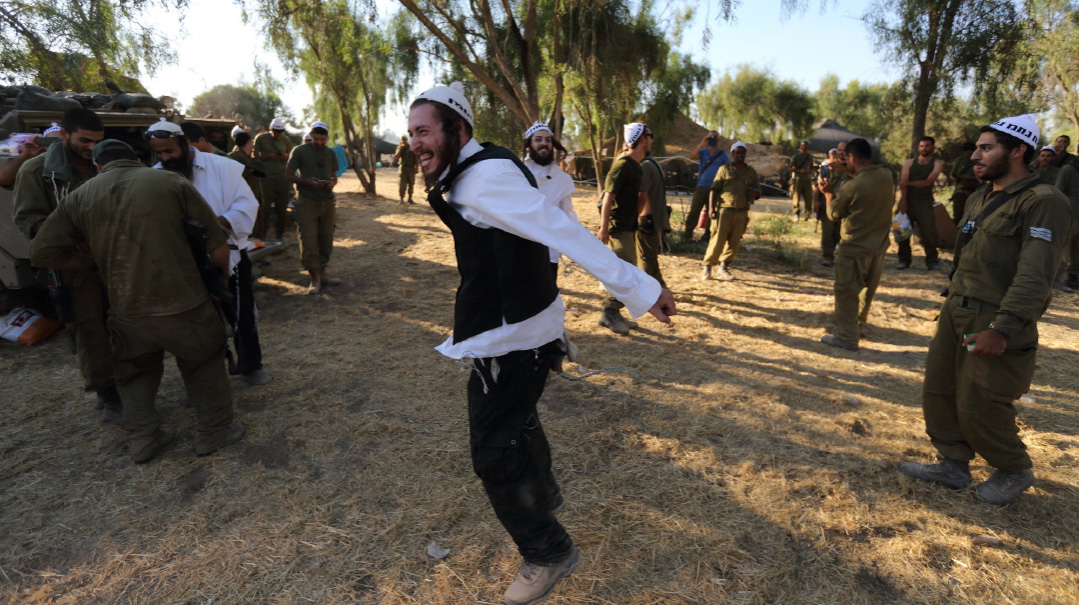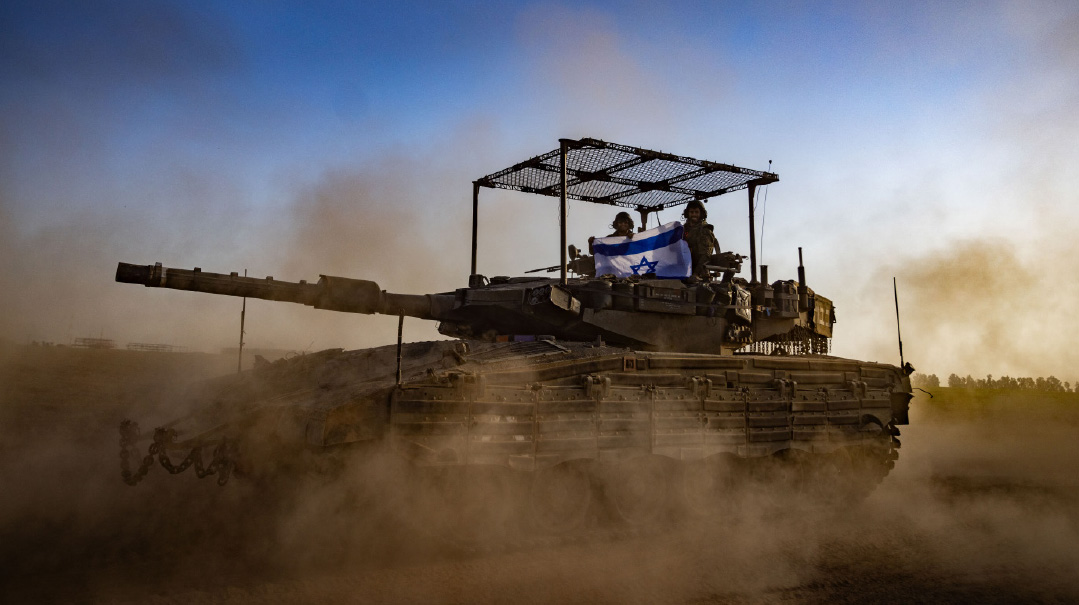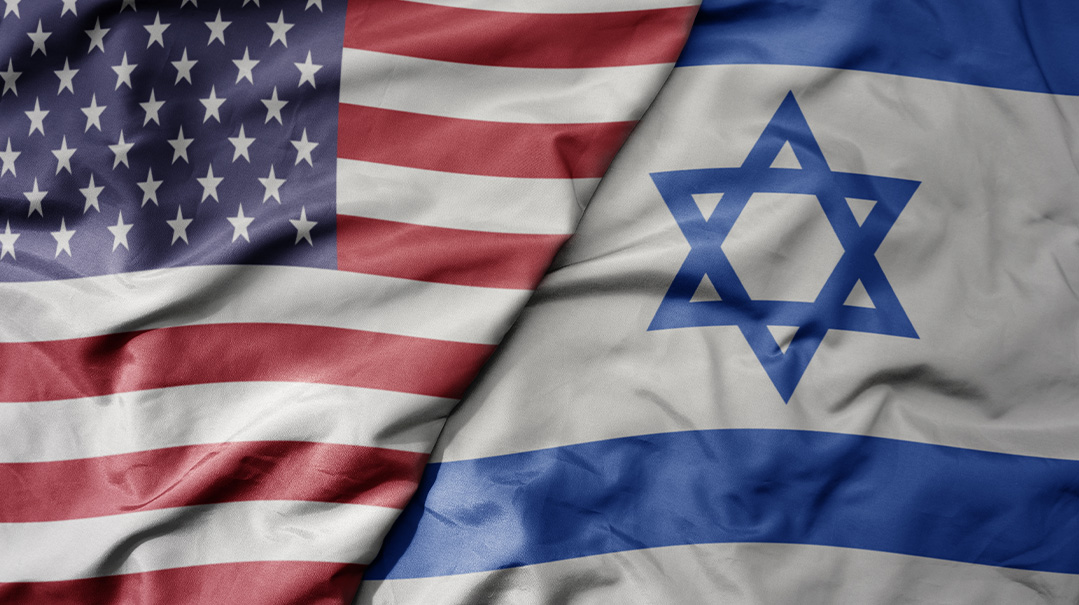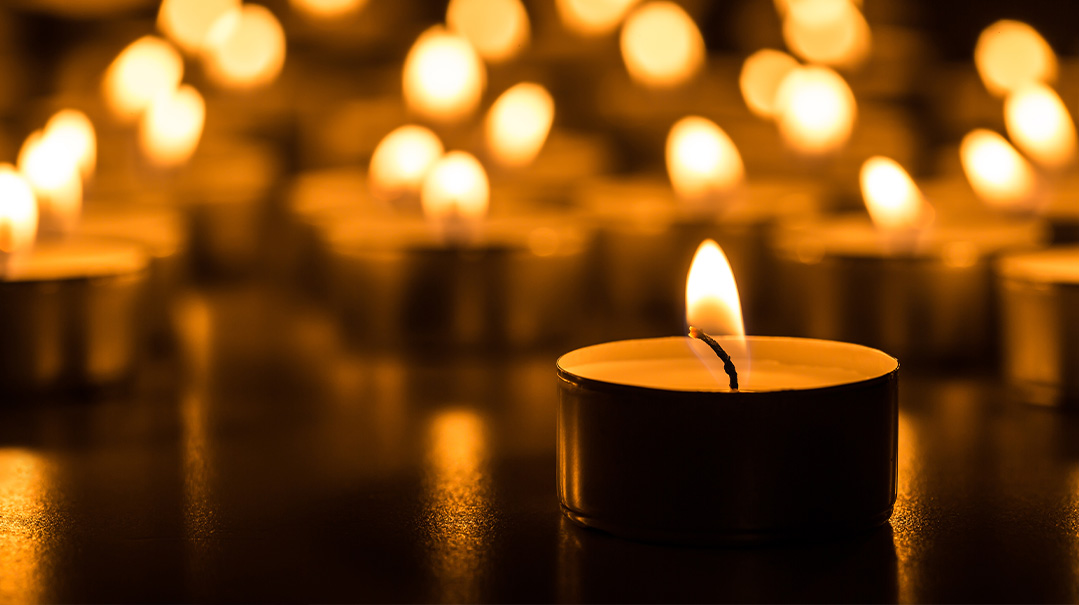An Open Wound on Israel’s Body Politic

What is new has been the rioting in mixed Jewish-Arab cities
The current fighting between Hamas and Israel is to a large extent a rerun: It is the fifth major confrontation between Israel and Hamas since Israel’s withdrawal from the Gaza Strip in 2005. We have seen this script before: Thousands of rockets — Hamas rockets, albeit with longer range, improved accuracy, and larger payloads — aimed at Israel’s cities; international condemnations of Israel’s response to the deliberate targeting of its civilian population as “disproportionate”; and UN calls for a cease-fire before sufficient damage has been inflicted on the Hamas military infrastructure that it will not feel free to resume where it left off in a matter of months or a few years at the most.
What is new — or at least not seen since the widespread Israeli Arab rioting of 2000 at the height of the Second Intifada, which left many of the major east-west highways through the Galilee impassable — has been the rioting in mixed Jewish-Arab cities: Jerusalem, Lod, Ramle, Jaffa, Akko, Haifa, and Nazareth. Molotov cocktails have been thrown into private homes, synagogues and Talmud Torahs have been torched, and Jewish drivers have been pulled from their cars and beaten.
Yigal Yerushalmi, a 56-year-old husband and father from Lod, who serviced both Jewish and non-Jewish clients as a plumber, was killed by a brick smashed on his head. (In response, Jewish vigilantes in several cities attacked Arabs and beat one Arab man seriously in Bat Yam, actions that were sharply condemned across the Israeli political spectrum, including in very strenuous terms by Religious Zionist Party leader Bezalel Smotrich.)
THE INTERNAL RIOTING caught Israel Jews largely by surprise because Jewish-Arab relations seemed to be heading very much in the opposite direction. At the time the rioting broke out, Mansour Abbas, the leader of the four-member Ra’am Party, had already been engaged in weeks of negotiations with every Zionist party, whether on the left or right, over the participation for the first time of an Arab party in the governing coalition. On April 1, he addressed the Israeli public on prime time TV in Hebrew, calling for “a vision of peace, mutual security, partnership, and tolerance between people.”
In coalition negotiations, Abbas maintained a laser focus on the immediate practical needs of Israel’s Arabs — e.g., fighting crime, health and education, and a new Bedouin city in the South, while strenuously avoiding hot-button words and issues: apartheid, occupation, Hamas, Jerusalem, and the Palestinians.
Two opinion polls taken in early 2020 showed Israeli Arabs increasingly professing an Israeli identity, as opposed to a Palestinian one. According to another poll, 63 percent of Israeli Arabs support Arab parties being part of the governing coalition. In the most recent elections, Likud garnered more votes in the Arab sector than the left-wing Meretz and Labor parties combined.
Khaled Abu Toameh and Dan Diker argued in an April 21 paper for the Jerusalem Center for Public Affairs, “Mansour Abbas, Mahmoud Abbas, and the Abraham Effect,” that Israeli Arabs are eager to participate in the $10 billion that the United Arab Emirates has committed to investing in Israeli high tech.
Even the reliably right-wing Dr. Martin Sherman, the founder and executive director of the Israel Institute for Strategic Studies, admits that prior to the current attacks against Jews, he had been on the cusp of changing his mind about the “loyalty” of Israeli Arabs and believing that they were not only integrating into Israeli society but actually identifying as Israelis. And part of that change of mind was predicated on his interactions with Israeli Arabs in the local mall.
And why should we not have believed that things were headed in the right direction? It is impossible today to enter an Israeli hospital and not be treated at some point by Arab doctors and nurses. The percentage of Arab doctors per 100,000 exceeds the percentage of Jewish doctors, and the number of Arab pharmacists is wildly disproportionate to the Arab percentage of the population. Israeli Arabs are found in Israeli universities in approximately their percentage of the population — “equity,” Israeli-style.
In 2015, the Israeli government allocated 10 billion shekels over five years to the development of Arab sector, including vast new building and infrastructure projects.
The percentage of Israeli Arabs entering the middle class has jumped in recent years — from 15.9 percent in 2009 to 22.6 percent in 2018. Even in Umm-al-Fahm, the center of the extremist Northern faction of the Islamic Movement in Israel, proposals to transfer certain Arab cities to Palestinian control in various peace deals were met with demonstrations and anger.
Israeli Arabs know how fortunate they are, both materially and in terms of their political rights, to live in Israel and not under the Palestinian Authority or Hamas, or in any of the neighboring Arab countries. The coronavirus brought home, in a major way, the advantages of being an Israeli citizen, as Israeli Arabs were, like all Israeli citizens, among the first to be vaccinated en masse in the world.
And so do their Palestinian brethren know the advantages of being an Israeli Arab. Before Covid, my wife and I did some home repairs, and the Palestinian workers frequently expressed to me their envy of Israeli Arabs.
Ironically, the pervasive fear being felt by Jews in mixed Arab-Jewish towns today is the best proof that those characterizing Israel of being an apartheid state are engaged in a blood libel. In Lod and Ramle, for instance, Jews and Arabs live side by side, often in the same apartment buildings. And the same is true in various Jerusalem neighborhoods — e.g., French Hill, Pisgat Zev, Abu Tor. The Jerusalem light rail passes through several Arab neighborhoods.
IT IS ALMOST IMPOSSIBLE TO OVERSTATE the trauma inflicted on the Israeli body politic by the mob violence of the past week. In Lod, three shuls were torched and burned to the ground. In Ramle, an Arab mob invaded the local hospital and ordered all the Arab doctors and nurses to leave or be deemed as traitors to the Palestinian cause.
Evan Fallenberg, a novelist and translator, who had created the Arabesque, an arts and residency center in the old city of Akko, from a renovated Ottoman ruin, surveyed the destruction by an Arab mob. “It is no small feat to upturn a grand piano or split a sink in two or rip a television or air conditioner into its tiniest parts,” he wrote at the Times of Israel. “The anger and hatred necessary are beyond my own imagination.”
To be sure, not every story was depressing — or only depressing. Fallenberg’s Arab neighbors attempted to defend the Arabesque until the mob surrounding the building had grown to 50 and threatened to burn the entire neighborhood down. Mansour Abbas toured one of the torched synagogues in Lod, together with the religious mayor of the city, and pronounced the attack “inexcusable.” Arab doctors and nurses continued working with their Jewish colleagues, despite the threats against them.
But even if many — perhaps most — Arab Israelis genuinely seek co-existence with their Jewish neighbors and fellow citizens, how will Jewish residents of Neve Yaakov ever again feel safe taking the light rail through Atarot, or residents of Arzei Habirah board and alight from the light rail station adjacent to the Sheikh Jarrah neighborhood? My son and his family live in a new chareidi development, Achisamach, that is part of the Lod municipality. He and his wife cannot imagine returning to the stores in downtown Lod that they have been shopping at since moving in.
On a positive note, the internal rioting, including videos of nine-year-olds in Lod toting machine guns, has furnished the Israeli government and Israeli Arabs a common interest in disarming violent criminal gangs in Arab cities and neighborhoods, many of whom were at the forefront of the rioting. In 2019, 15 Arab mayors and their families were targeted by local criminal families with gunfire, Molotov cocktails, and car bombs. Not by accident were increased budgets for policing Arab towns consistently at the top of Mansour Abbas’s priorities.
DAN DIKER, former head of the World Jewish Congress and a senior fellow at the Jerusalem Center for Public Affairs, attributes the Hamas-fomented rioting to the PTSD suffered by the resistance front, consisting of Iran, Hezbollah, and Hamas, in the wake of the Abraham Accords. The Accords demonstrated that a large swath of the Arab world is prepared to move on from rejection of Israel’s existence and to benefit from its technological know-how. And that is true of many Israeli Arabs as well.
The trouble is that just as Hamas has launched repeated rocket attacks on Israel since taking over the Gaza Strip in 2006, so can it be expected to seize any pretext to rile elements in the Israeli Arab population in the years to come.
Originally featured in Mishpacha, Issue 862. Yonoson Rosenblum may be contacted directly at rosenblum@mishpacha.com
Oops! We could not locate your form.






